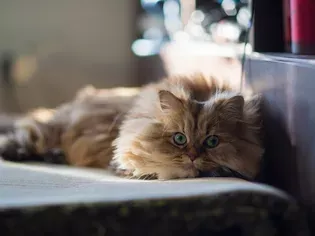Polycystic Kidney Disease in Cats
Updated on 04/26/24

Understanding Polycystic Kidney Disease (PKD) in Cats: A Comprehensive Guide
Polycystic kidney disease (PKD) is a complex and debilitating condition that affects the kidneys of cats. It is characterized by the formation of fluid-filled cysts within the kidneys, which can lead to progressive kidney damage and ultimately kidney failure. While PKD is a serious disease, early detection and management can significantly improve the quality and longevity of life for affected cats.
Causes and Development of PKD in Cats
PKD is a hereditary condition, meaning it is passed down from parents to offspring through genetic mutations. The specific gene responsible for PKD has not been identified in cats, but researchers believe it is likely a dominant gene, meaning only one copy of the mutated gene is necessary to cause the disease.
PKD typically develops in cats between the ages of 3 and 10 years, but it can occur at any age. The progression of the disease varies widely, with some cats experiencing a rapid decline in kidney function, while others may live for years with minimal symptoms.
Signs and Symptoms of PKD in Cats
The signs and symptoms of PKD in cats can be subtle in the early stages of the disease. As the cysts grow and kidney function declines, more noticeable symptoms may develop, including:
* Increased thirst and urination
* Loss of appetite and weight
* Lethargy and weakness
* Vomiting and diarrhea
* Blood in the urine
* Seizures
Diagnosis and Treatment of PKD in Cats
Diagnosing PKD in cats typically involves a physical examination, blood tests, and an ultrasound exam of the kidneys. Blood tests can reveal elevated levels of creatinine, a waste product that accumulates in the blood as kidney function declines. Ultrasound imaging can visualize the cysts and assess the extent of kidney damage.
Unfortunately, there is no cure for PKD in cats. Treatment is primarily focused on managing the symptoms and slowing the progression of the disease. This often involves:
* Dietary management: A low-protein diet can help reduce the workload on the kidneys and slow the formation of cysts.
* Fluid therapy: Intravenous or subcutaneous fluids may be necessary to keep the cat hydrated and flush out toxins.
* Medications: Various medications can be used to treat the symptoms of PKD, such as anti-nausea drugs, anti-hypertensives, and ACE inhibitors to protect the kidneys.
* Kidney transplantation: In severe cases, a kidney transplant may be performed to replace the damaged kidneys with healthy ones. However, this procedure is complex and not always successful.
Prognosis for Cats with PKD
The prognosis for cats with PKD depends on several factors, including the severity of the disease, the age of the cat, and the effectiveness of treatment. With early detection and proper management, many cats with PKD can live long and relatively comfortable lives. However, the disease can be unpredictable, and some cats may experience a rapid decline in kidney function and ultimately succumb to kidney failure.
Breeds Prone to PKD
Certain breeds of cats are more prone to developing PKD, including:
* Persian
* Exotic Shorthair
* Maine Coon
* British Shorthair
* American Shorthair
If you own a cat from one of these breeds, it is important to be aware of the signs and symptoms of PKD and to have your cat regularly screened by a veterinarian.
Conclusion
Polycystic kidney disease is a challenging condition for cats, but with the right care and support, affected cats can live full and happy lives. Early detection and a comprehensive treatment plan are essential for managing the disease and improving prognosis. If you suspect your cat may have PKD, consult with your veterinarian immediately for an accurate diagnosis and treatment recommendations.
Explore More Pets

Cat Behavior Problems
How to Stop Aggression in Kittens

Long-Haired Cat Breeds
Siberian Cat: Breed Profile, Characteristics, & Care

Cat Behavior Problems
How to Stop Kittens From Scratching and Biting

Long-Haired Cat Breeds
Turkish Angora: Cat Breed Profile, Characteristics & Care

Basic Training
How to Socialize Your Kitten

Short-Haired Cat Breeds
Cute Pictures & Facts About Calico Cats & Kittens

Litter Box Training
Training Your Kitten to Use the Litter Box

Long-Haired Cat Breeds
10 Fun Facts About White Cats